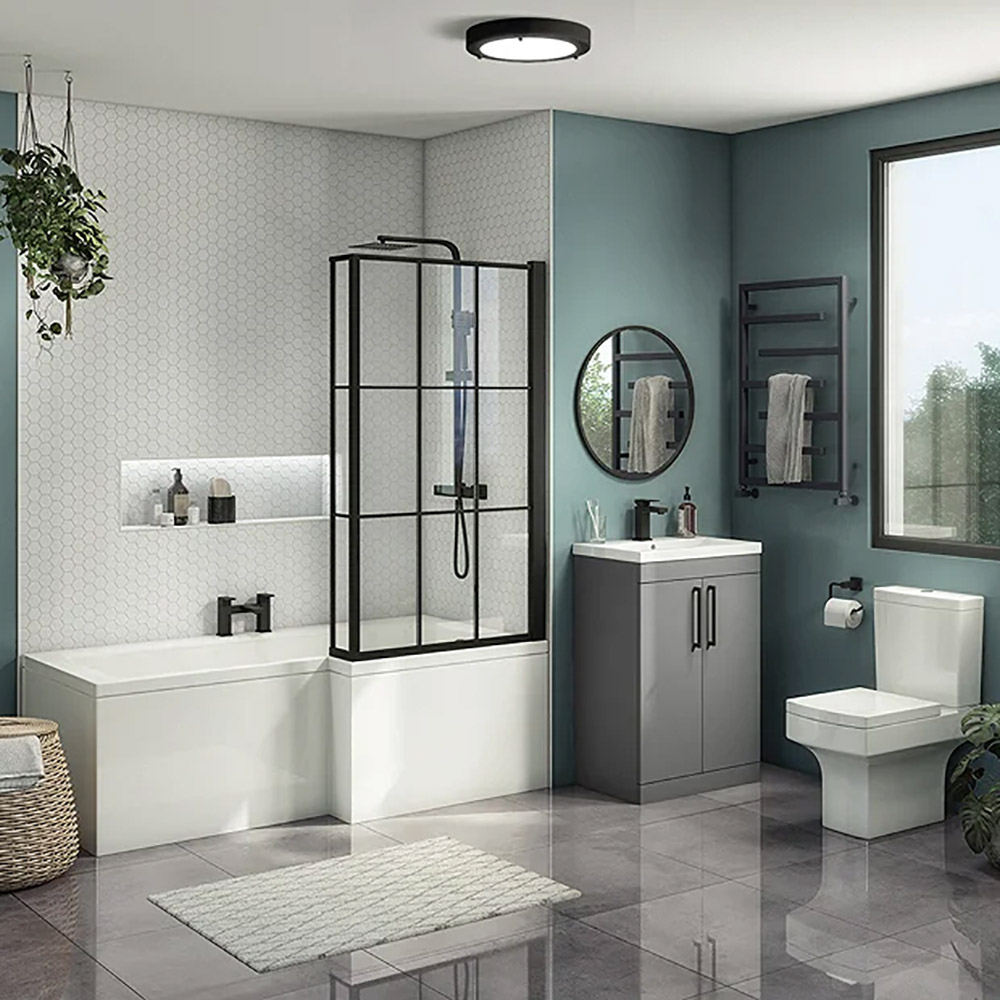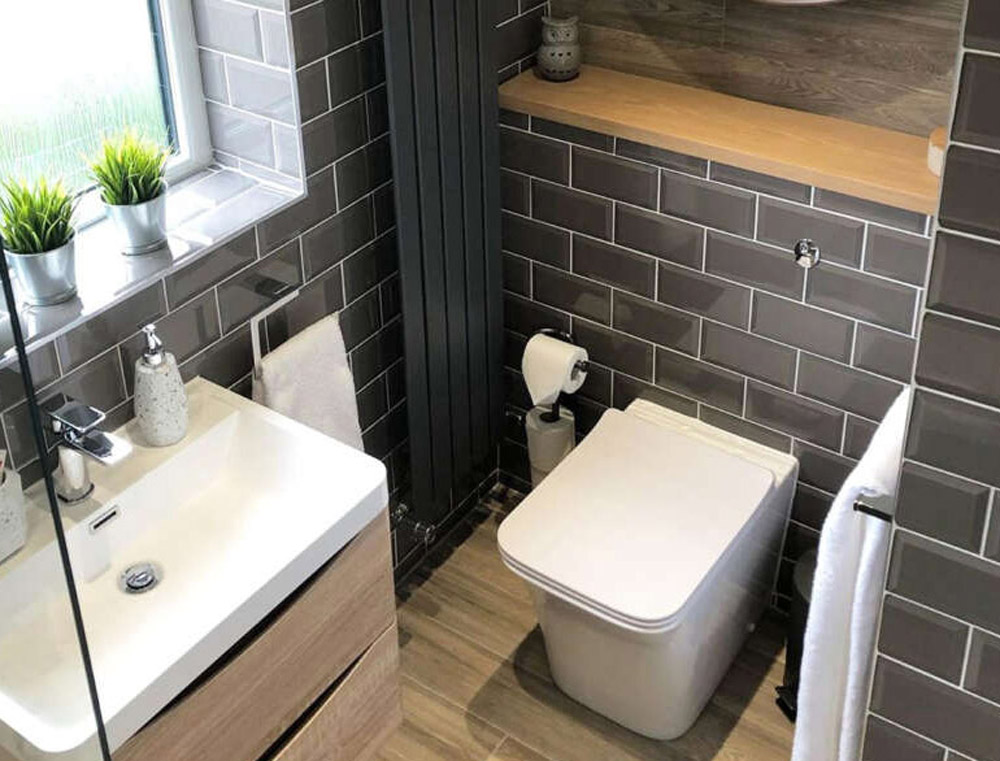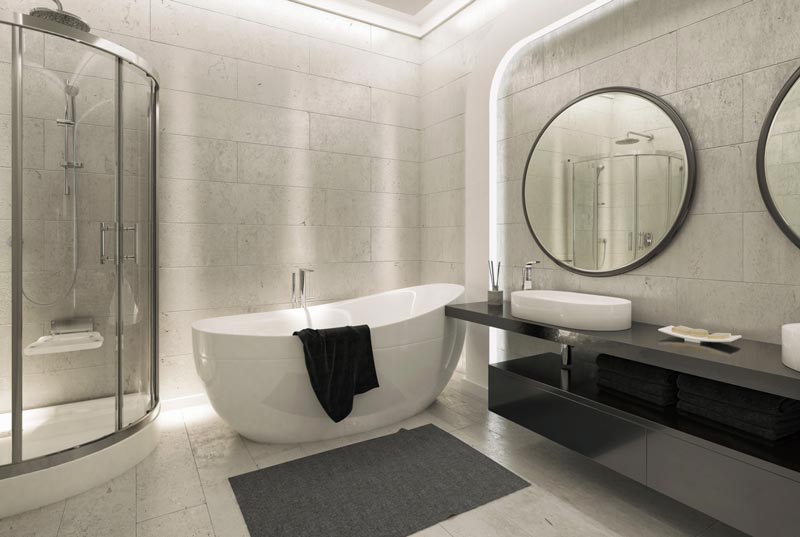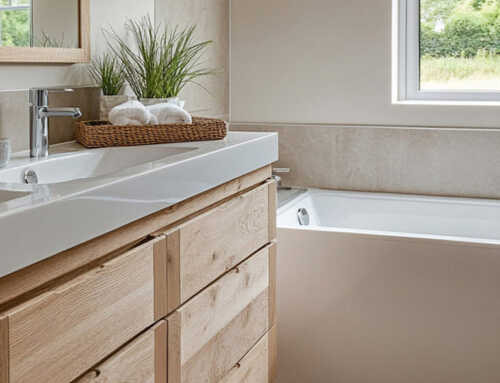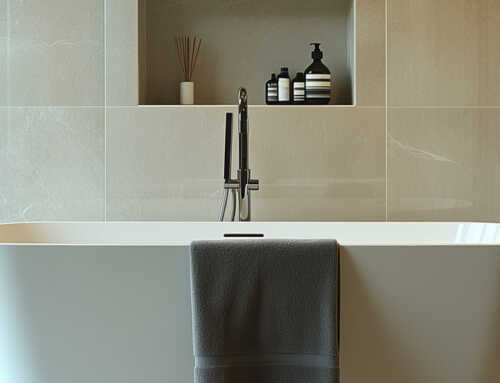Why a Well-Planned Bathroom Installation Matters
A bathroom should be a space of relaxation, but without proper planning, it can quickly become a source of stress – cramped layouts, poor ventilation, and unexpected costs can turn an exciting renovation into a frustrating project. Whether you’re tackling a full remodel or a simple refresh, this guide will walk you through every step to ensure a smooth, stress-free installation.
What This Guide Covers
This guide is designed to take you through every stage of bathroom installation, from the initial planning phase to the finishing touches. Whether you’re designing a brand-new bathroom, updating an outdated space, or making small but impactful changes, we’ll provide the insights you need to make informed decisions.
- Planning & Design – Choosing the right layout, style, and materials.
- Budgeting – Understanding costs and where to invest or save.
- Step-by-Step Installation Process – From plumbing to tiling and final fittings.
- Smart Bathroom Technology & Eco-Friendly Choices – How to future-proof your space.
- Common Mistakes & Troubleshooting – How to avoid costly errors.
Why This Guide is Relevant to UK Homeowners
If you’re in Watford or St Albans, local building regulations can impact your renovation. This guide ensures your project complies with UK planning laws, water efficiency standards, and safety requirements – so you can avoid legal issues and ensure a smooth installation.
What You’ll Gain
With a clear plan and the right approach, you can transform your bathroom into a functional, stylish, and long-lasting space. Now, let’s start with the foundation of any successful renovation—bathroom inspiration.

Planning & Design – Laying the Foundations for a Successful Bathroom Installation
A well-planned bathroom is more than just a stylish space—it’s a functional, efficient, and comfortable retreat. However, without careful planning, your dream bathroom could turn into a budget-draining nightmare with costly mistakes, poor layouts, and unexpected delays.
In this section, we’ll guide you through the key decisions that will set the foundation for a smooth and stress-free installation.
Assessing Your Needs & Space
Before selecting tiles, taps, or fittings, it’s essential to evaluate your space and define your priorities.
Choosing the Type of Bathroom
Different bathrooms serve different functions. Consider:
- Family bathroom – Requires durability, ample storage, and kid-friendly features.
- Ensuite – Should be compact yet functional, often designed for two people.
- Guest WC – Usually small but should be stylish and practical.
- Luxury bathroom – Can include premium features such as freestanding tubs and walk-in showers.
Understanding Space Constraints
Before making any design decisions, ask yourself:
- What is the primary function of this bathroom? (A high-traffic family bathroom or a luxury ensuite?)
- Do I have enough storage space, or do I need built-in solutions?
- Are there any layout limitations due to existing plumbing or electrics?
- Is ventilation adequate, or do I need to upgrade to prevent mould?
By evaluating these factors early, you can avoid expensive redesigns later in the process.
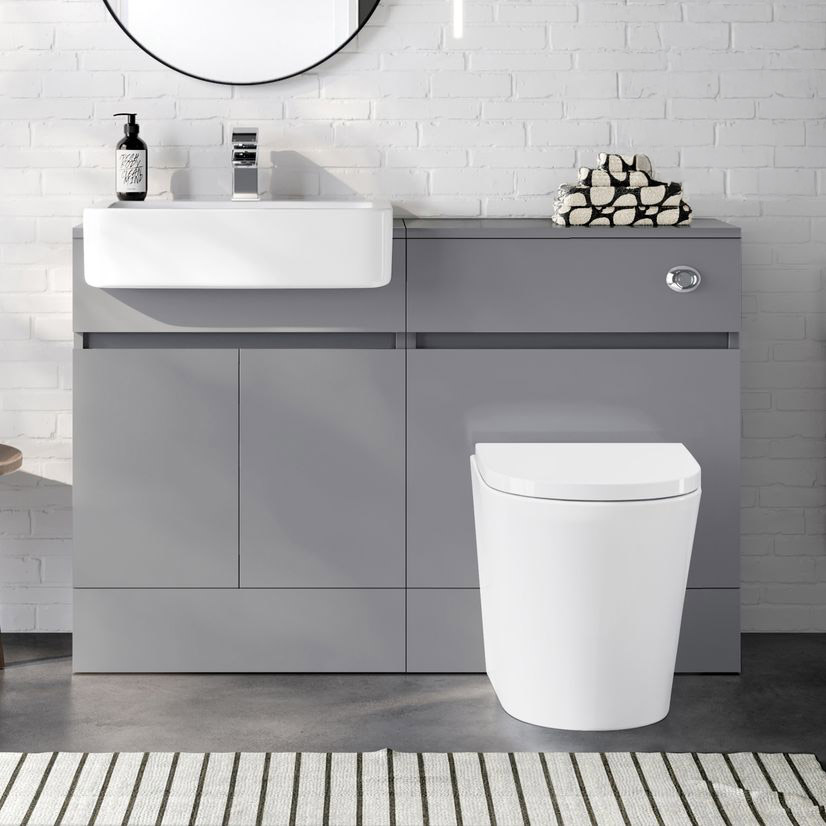
Budgeting & Cost Considerations
Budgeting wisely prevents unexpected expenses.
Where to Splurge vs. Save
- Splurge on: Waterproofing and plumbing, taps and showers, and professional installation.
- Save on: Vanity units and storage, tiles and flooring, and DIY-friendly jobs like painting and adding accessories.
Hidden Costs to Consider
- Plumbing upgrades – Old pipework may need replacing.
- Ventilation and heating – Prevents damp issues and ensures comfort.
- Structural repairs – Water damage or rotten floorboards can add unexpected costs.

Layout & Functionality
Your bathroom layout affects both practicality and comfort.
Best Layouts for Different Spaces
- Small bathrooms: Use wall-mounted fittings, corner sinks, and sliding doors.
- Medium bathrooms: Combine a shower and bath for flexibility.
- Large bathrooms: Include separate shower and bath areas, with double vanities.
Maximising Space & Storage
- Install recessed shelving or floating shelves.
- Opt for a vanity unit with built-in storage.
- Use large mirrors to create an illusion of space.
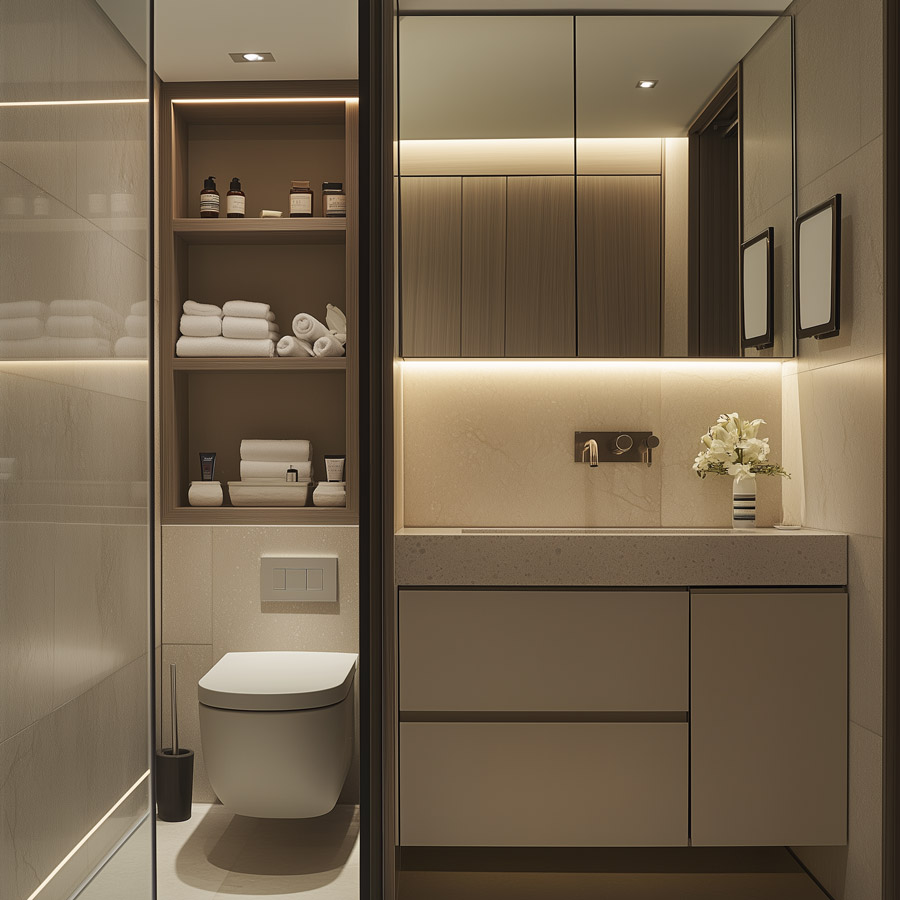
Local Regulations & Building Permissions
Do You Need Planning Permission?
Most bathroom renovations don’t require planning permission, but you might need approval in cases where:
- You’re relocating a bathroom to another part of the house.
- Your property is listed or in a conservation area.
UK Building Regulations to Follow
Even without planning permission, work must comply with UK Building Regulations, particularly:
- Plumbing: Must meet water efficiency standards.
- Electrics: Any electrical work must follow Part P regulations.
- Ventilation: Adequate airflow is required to prevent damp and mould.
Choosing a Style & Design Theme
Your bathroom should reflect both aesthetics and practicality.
Popular Bathroom Styles
- Modern – Sleek, minimalistic, often with monochrome colours.
- Traditional – Period-style fittings, roll-top baths, ornate detailing.
- Scandinavian – Light colours, natural materials, and simple designs.
- Industrial – Exposed pipes, dark tiles, and metal fixtures.
Balancing Style & Function
- Flooring: Non-slip tiles for safety.
- Lighting: Layered lighting (ambient, task, and accent lighting).
- Tiles: Large-format tiles reduce grout lines and make cleaning easier.
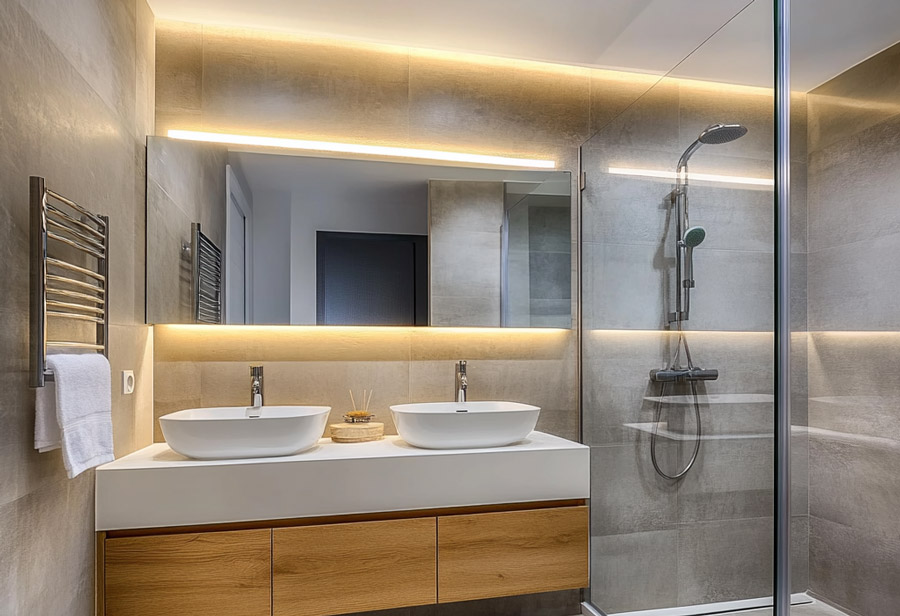
Accessibility Considerations
- Walk-in showers instead of tubs.
- Grab bars near the toilet and shower.
- Raised-height toilets for easier access.
These changes improve safety without sacrificing style.
Eco-Friendly Design Choices
Energy-Efficient Fixtures
- Low-flow toilets and taps reduce water usage by up to 50%.
- LED lighting lasts longer and consumes less energy.
- Water-saving showers use aerators to maintain pressure while using less water.
Sustainable Materials
- Recycled tiles instead of traditional ceramics.
- Bamboo or reclaimed wood for vanities.
By incorporating eco-friendly features and smart design choices, you can create a bathroom that is both functional and sustainable.
Now, let’s explore the step-by-step installation process to bring your vision to life.
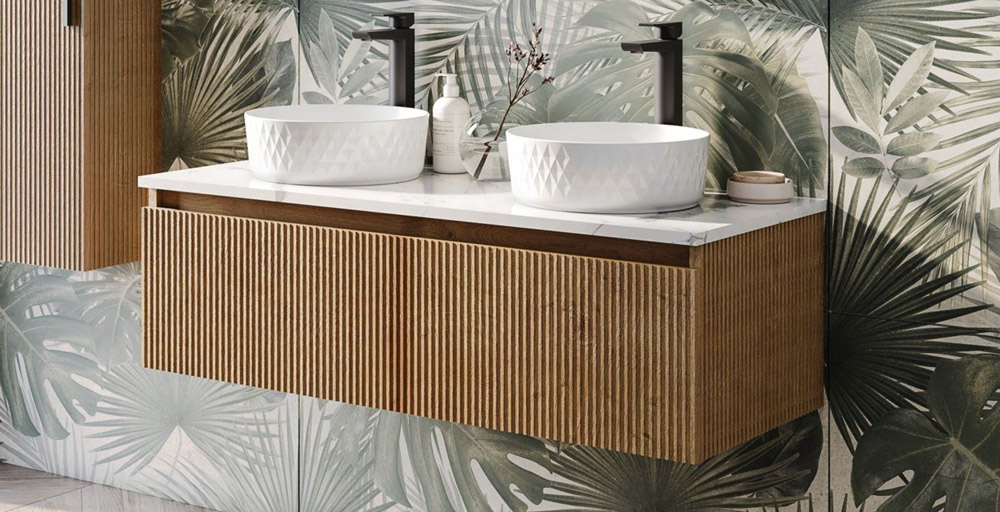
Step-by-Step Installation Process
Bathroom installations can be exciting yet overwhelming—one wrong step and you could end up with leaks, poor drainage, or costly rework. Whether you’re hiring professionals or handling some tasks yourself, following a structured installation process will help you avoid common pitfalls and unexpected delays.
This section will walk you through the step-by-step process, from preparation to final checks, while also addressing troubleshooting common issues that may arise along the way.
Pre-Installation Preparation
Before any work begins, the bathroom must be properly prepared to ensure a smooth installation.
Clearing the Space
- Remove old fixtures, tiles, and flooring.
- Turn off water and electricity before demolition begins.
- Dispose of waste responsibly using a licensed waste removal service.
Assessing Plumbing & Electrics
- Inspect existing pipework and wiring to determine if upgrades are needed.
- If relocating sinks, toilets, or baths, be aware that additional plumbing work may be required.
Ensuring Waterproofing
- Apply a waterproof membrane or tanking system to floors and walls.
- Wet rooms or walk-in showers require sloped flooring to ensure proper drainage.

Plumbing & Electrical Work
Plumbing and electrical installations form the backbone of your bathroom. Any issues at this stage can cause long-term problems.
Plumbing Layout Planning
- Identify water supply and drainage points before installation begins.
- Ensure the water pressure is adequate for new fixtures.
Installing New Pipework
- Use copper or plastic pipework, which are commonly used in the UK.
- Insulate pipes where necessary to prevent heat loss and condensation issues.
Electrical Installation
- Install lighting, extractor fans, heated towel rails, and underfloor heating.
- All bathroom electrics must comply with Part P of UK Building Regulations—only a qualified electrician can handle mains power connections.

Flooring & Wall Finishes
Choosing the Right Flooring
- Ceramic or porcelain tiles are waterproof and durable.
- Vinyl flooring is affordable and water-resistant.
- Waterproof laminate is stylish and easier to install but can warp in high moisture.
Wall Finishing Options
- Ceramic or porcelain tiles are traditional and highly water-resistant.
- Waterproof panels have fewer seams, are low maintenance, and quick to install.
- Painted walls must be moisture-resistant and suited for humid environments.
Grouting & Sealing
- Apply high-quality waterproof grout to prevent moisture seepage.
- Use silicone sealant around the edges of the bath, sink, and shower.
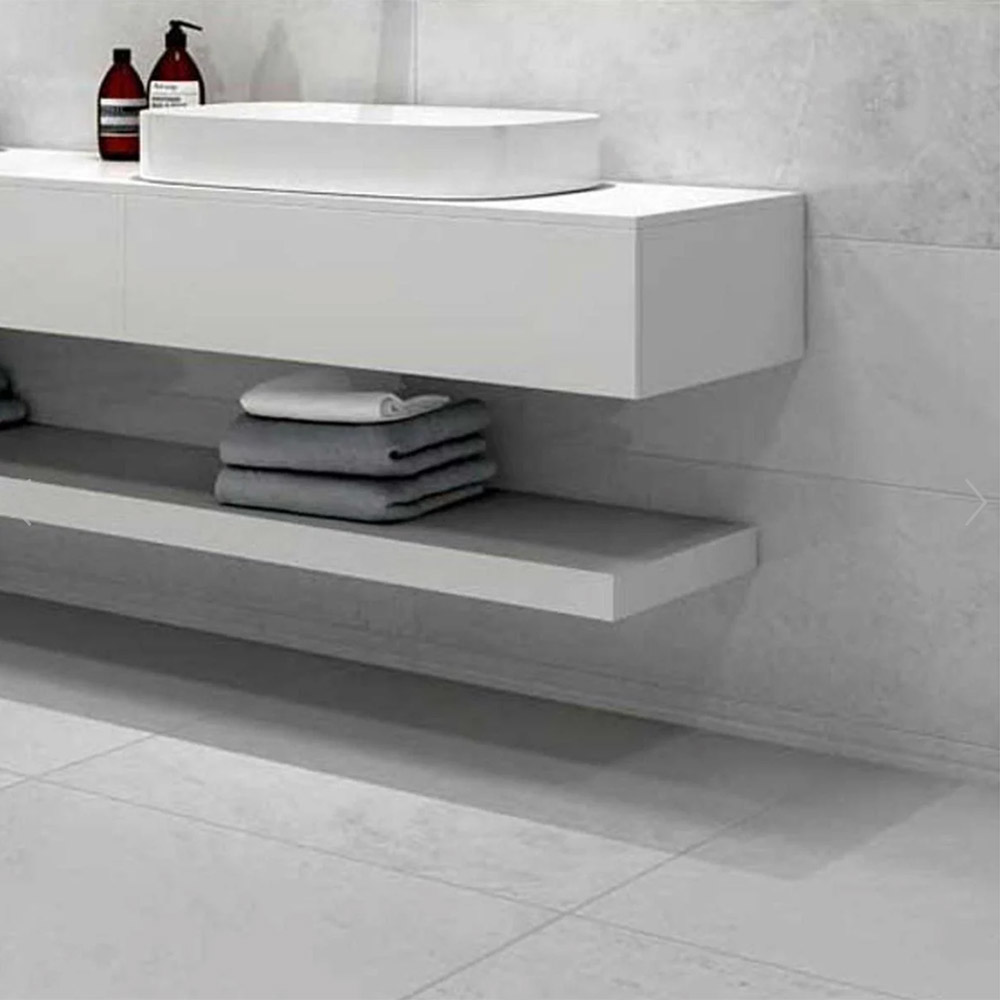
Installing Fixtures & Fittings
Once the walls and floors are complete, it’s time to fit the essential bathroom components.
Fitting the Bath and/or Shower
- Position the bath or shower tray against a fully waterproofed wall.
- Ensure the waste outlet is securely connected to prevent leaks.
Toilet Installation
- Secure the toilet to the waste pipe and water supply.
- Check that the flush mechanism works smoothly before sealing around the base.
Basin & Vanity Unit Fitting
- Mount the basin at a comfortable height and seal around edges to prevent water damage.
- Ensure vanity units have proper ventilation to avoid moisture build-up.
Taps & Showerheads
- Connect taps and test water flow and temperature control.
- Install a thermostatic shower valve for consistent temperature regulation.
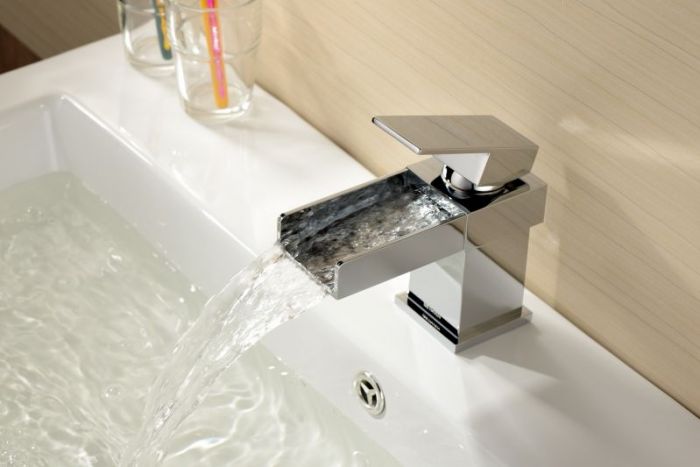
Final Checks & Quality Assurance
Before calling the job complete, several final tests should be performed.
- Check all pipe connections for leaks before sealing fixtures.
- Test water pressure in taps and showerheads.
- Ensure all electrical fittings work and extractor fans function properly.
- Inspect tile grout and sealant for any gaps or uneven finishes.
- Polish surfaces and remove construction dust before final use.
Troubleshooting Common Installation Issues
Even with careful planning, unexpected issues can arise during a bathroom installation. Here’s how to handle them:
Low Water Pressure
- Possible causes: Blocked pipes, faulty taps, or insufficient supply pressure.
- Solution: Clean or replace taps and showerheads; check stop valves for blockages.
Leaks from Taps, Showerheads, or Pipes
- Possible causes: Poor sealing, loose fittings, or damaged washers.
- Solution: Tighten connections, apply new PTFE tape to threads, or replace washers.
Toilet Not Flushing Properly
- Possible causes: Clogged waste pipe or faulty flush mechanism.
- Solution: Use a plunger or toilet auger for blockages; adjust or replace the cistern mechanism.
Uneven Tiling or Flooring
- Possible causes: Incorrect tile spacing, adhesive setting too quickly.
- Solution: If tiles appear misaligned after setting, use a rubber mallet to gently reposition them while the adhesive is still wet. If grout is uneven, use a grout float to even out excess grout before it dries.
Poor Ventilation & Condensation Issues
- Possible causes: Weak extractor fan, lack of natural airflow.
- Solution: Upgrade to a higher-capacity fan or install a humidity sensor for automatic moisture control.
A beautifully installed bathroom is just the beginning—keeping it in top condition ensures it remains functional and visually appealing for years to come. Let’s look at simple maintenance routines and care tips that will help you extend the lifespan of your new space.
Maintenance & Long-Term Care
Nothing ruins a bathroom faster than mould creeping into the grout, limescale clogging showerheads, or a blocked drain flooding the floor. Without regular maintenance, these common problems can turn a dream bathroom into a costly headache.
The good news? With a few simple habits, you can keep your bathroom pristine, functional, and problem-free for years to come.
Daily & Weekly Cleaning Routine
Regular cleaning prevents the buildup of dirt, limescale, and mould, keeping your bathroom fresh and hygienic.
Daily Cleaning Checklist:
Wipe down sinks, taps, and countertops to remove water stains and soap scum.
Use a squeegee on shower screens to prevent water spots and limescale buildup.
Keep drains clear – Pour boiling water down the drain daily to prevent clogs.
Ensure good ventilation – Open windows or run the extractor fan for at least 20 minutes after showers.
Weekly Cleaning Checklist:
Toilet: Use a limescale remover in the bowl and disinfect the seat and flush handle.
Shower and bath: Scrub grout lines and showerheads to prevent soap scum buildup.
Floors and tiles: Mop with a suitable bathroom cleaner to prevent grime and bacteria growth.
Mirrors and glass: Use a streak-free glass cleaner for a polished finish.
Descale taps and showerheads: Soak in white vinegar to remove hard water deposits.
Preventing Mould & Damp Issues
Bathrooms are prone to high humidity, which can lead to mould and damp problems if not managed properly.
How to Prevent Mould & Mildew
Ventilation is key – Always use an extractor fan or open windows after showers.
Dry wet areas quickly – Wipe down walls, tiles, and shower doors after use.
Use mould-resistant paint and sealant – Especially in high-moisture areas.
Clean grout regularly – Scrub with a baking soda and vinegar mix to prevent mould growth.
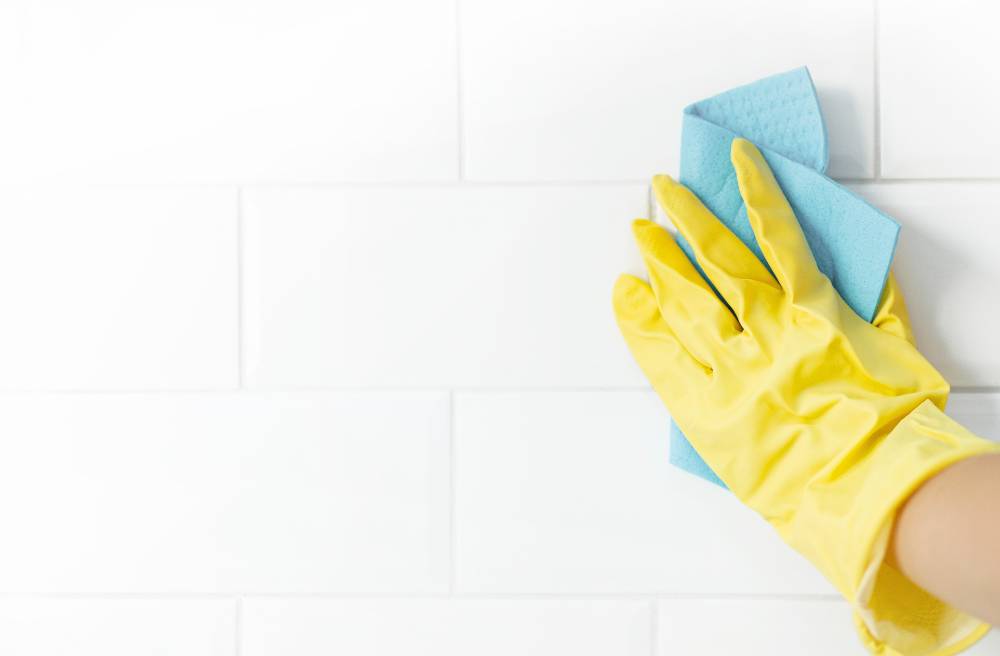
Protecting Fixtures & Fittings
Bathroom fixtures can lose their shine and functionality if not properly maintained.
How to Prevent Limescale Buildup on Taps & Showerheads
Soak showerheads in white vinegar overnight to remove limescale.
Use a mild descaler on taps and faucets once a month.
Wipe surfaces dry after use to prevent water stains and deposits.
Caring for Mirrors & Storage Units
Avoid excessive moisture—position mirrors away from direct steam.
Clean mirrored surfaces with non-abrasive glass cleaner to prevent streaks.
Keep wooden storage units away from direct water exposure to prevent warping.
Bath & Shower Care
Use non-abrasive cleaners on baths to prevent scratches.
For acrylic tubs, avoid harsh chemicals that can damage the finish.
Rinse the bath after every use to remove soap residue.
Avoiding Common Bathroom Issues
Blocked Drains
Causes: Hair, soap residue, and product buildup.
Prevention: Use drain strainers and flush drains weekly with boiling water and baking soda.
Fix: Pour baking soda and vinegar, let sit for 10 minutes, then rinse with hot water. For severe clogs, use a plunger or drain snake.
Toilet Problems
Causes: Weak flush or constant running water.
Fix: Open the cistern and check the fill valve—adjust it if the water level is too low. If the toilet keeps running, replace the flush valve seal.
Sealant & Grout Maintenance
Causes: Cracked or peeling sealant around the bath or sink.
Fix: Remove old sealant with a sharp knife, clean the area, and apply a fresh bead of waterproof silicone.
When to Call a Professional
Some issues require expert help. Ignoring them can lead to serious damage.
Signs You Need a Plumber or Electrician
Persistent leaks under sinks, baths, or behind walls – If water damage is visible, call a plumber immediately to prevent mould and structural damage.
Slow-draining water despite using drain cleaners – A plumber may need to inspect the pipes for a deeper blockage.
Low water pressure or inconsistent temperature from taps and showers – Could be a sign of a failing pressure valve or plumbing issue.
Extractor fan failure leading to excessive condensation – If the fan motor is not running properly, an electrician may be needed for a replacement.
Long-Term Upkeep & Future-Proofing
A well-maintained bathroom lasts longer. Here’s how to future-proof your space:
Replace sealant and grout every two to three years to prevent leaks.
Descale taps and showerheads every six months to maintain good water flow.
Check ventilation systems annually to ensure efficient airflow.
Upgrade gradually – Consider water-saving taps, LED lighting, and smart thermostatic showers.
Plan for accessibility – If renovating in the future, install reinforced walls to accommodate grab bars if needed.
Good maintenance helps prevent future problems, but sometimes questions arise about materials, regulations, or installation processes.
In the next section, we’ll answer some of the most common questions homeowners have about bathroom renovations.
Frequently Asked Questions (FAQs)
Bathroom installations can be complex, and homeowners often have many questions about costs, timelines, materials, and regulations. Here, we answer some of the most common FAQs, helping you make informed decisions for your project.
Timeline & Project Duration FAQs
How long does a bathroom installation take?
A typical bathroom renovation should take two to four weeks, but delays are common due to:
- Material shortages – Custom tiles or imported fittings may take weeks to arrive.
- Hidden plumbing or structural issues – Discovering old pipes or rotting floorboards can extend timelines.
- Trade scheduling conflicts – Plumbers, electricians, and tilers must coordinate work, and delays in one area can slow the whole process.
What can delay a bathroom renovation?
- Late material deliveries – Always order in advance.
- Unexpected plumbing or structural issues – Hidden problems can slow progress.
- Waiting for tradespeople – Coordinate schedules to avoid gaps in work.
Can I still use my bathroom while it’s being renovated?
If it’s a full renovation, the bathroom will be out of use. Consider:
- Using a second bathroom (if available).
- Arranging temporary facilities such as a portable toilet or using a neighbour’s or friend’s bathroom during key stages.
Planning & Design FAQs
Do I need planning permission for a new bathroom?
Most bathroom installations don’t require planning permission, unless:
- You’re installing a bathroom in a new location, such as converting a bedroom.
- Your home is listed or in a conservation area.
What are the key UK building regulations for bathrooms?
- Ventilation – Extractor fans are required if no windows are present.
- Electrical safety – Part P regulations apply to bathroom electrics.
- Water efficiency – UK rules limit water waste in new fixtures.
How do I choose the right layout for my bathroom size?
- Small bathrooms – Use wall-mounted sinks and storage to save space.
- Medium bathrooms – Balance function and aesthetics with a mix of bath and shower.
- Large bathrooms – Consider separate shower and bath zones for luxury.
Common mistakes to avoid:
Placing the toilet as the first thing you see – Visually unappealing and poor design.
Insufficient storage – Use floating shelves or built-in cabinets to prevent clutter.
Poor lighting – Use layered lighting such as overhead, mirror, and shower lighting to avoid dark spots.
Installation & Materials FAQs
What’s the best flooring for a bathroom?
Ceramic or porcelain tiles – Waterproof and durable.
Vinyl flooring – Affordable, water-resistant, and warm underfoot.
Waterproof laminate – Stylish and easy to install but can warp in high moisture.
Should I choose a walk-in shower or a bathtub?
- Walk-in shower – Best for small bathrooms and easy accessibility.
- Bathtub – Great for families and relaxation.
- Shower-bath combo – Ideal for multi-use flexibility.
What are the most durable and easy-to-clean bathroom materials?
- Porcelain tiles – Scratch-resistant and waterproof.
- Quartz or granite worktops – Stain-resistant and long-lasting.
- Chrome or stainless steel fixtures – Easy to clean and corrosion-resistant.
Plumbing & Electrical FAQs
Do I need to upgrade my plumbing for a new bathroom?
If your home has old pipework, an upgrade may be needed to:
Improve water pressure.
Prevent leaks and blockages.
Ensure compliance with modern building standards.
What type of ventilation is required for a bathroom?
UK regulations require:
An extractor fan if there are no opening windows.
A minimum 15 litres per second airflow rate for fans.
Can I install underfloor heating in my bathroom?
Yes, there are two main options:
Electric underfloor heating – Easier to install, ideal for small spaces.
Water-based systems – More energy-efficient but requires professional installation.
Maintenance & Longevity FAQs
How do I prevent mould and damp in my bathroom?
Use an extractor fan or dehumidifier.
Wipe down shower walls and tiles after use.
Apply mould-resistant paint and sealant.
How often should I reseal tiles and grout?
Every one to two years in high-moisture areas.
Inspect for cracks or discolouration regularly.
What’s the best way to maintain taps and showerheads?
Descale showerheads monthly with vinegar.
Wipe chrome fixtures with a soft cloth to prevent water spots.
Hiring Professionals vs. DIY FAQs
Can I install a bathroom myself, or do I need a professional?
DIY-friendly tasks:
Painting walls.
Installing shelves and mirrors.
Replacing taps, provided the pipework stays the same.
Tasks requiring a professional:
Plumbing adjustments.
Tiling and waterproofing.
Installing a shower or bathtub.
In the UK, all electrical work in bathrooms must comply with Part P regulations, so always use a qualified electrician.
What should I look for when hiring a bathroom installer?
Check credentials – Ensure they are Part P (electrics) and Gas Safe registered.
Ask for references – Request at least three customer testimonials or check online reviews.
Get multiple quotes – Beware of unusually low quotes, as they may indicate cheap materials or inexperienced workers.
Clarify the contract – Ensure the agreement includes:
- Scope of work
- Timeline
- Payment terms
- Warranty details
How do I ensure my contractor follows UK regulations?
Request a written contract outlining the work and materials used.
Ensure they provide certificates of compliance for electrical work.
Check they are insured in case of accidental damage.
With all your key questions answered, you’re now ready to move forward with confidence.
Let’s summarise the most important points and final steps to ensure your bathroom renovation is a success.
Conclusion
A well-planned bathroom installation can transform your home, adding both functionality and value. Whether you’re carrying out a full renovation or a simple upgrade, careful planning, the right materials, and professional expertise will ensure a high-quality, long-lasting result.
Key Takeaways from This Guide
Throughout this guide, we’ve covered the essential aspects of planning, designing, and installing a bathroom. Here’s a quick recap of the key points:
- Planning & Design – Define your needs, set a budget, and choose a functional layout.
- Regulations & Permissions – Ensure compliance with UK building regulations, particularly for electrics and plumbing.
- Materials & Fixtures – Select durable, water-resistant materials that match your style, such as tiles and vanities.
- Installation Process – Follow a structured timeline for plumbing, tiling, and fitting fixtures.
- Maintenance & Longevity – Regular cleaning and preventative care keep your bathroom in top condition.
By following these steps, you can avoid common mistakes and achieve a stress-free bathroom renovation.
Common Mistakes to Avoid
Many homeowners encounter challenges during a renovation. Here are some of the biggest pitfalls to watch out for:
- Lack of planning – Jumping in without a clear layout or budget can lead to costly changes mid-project.
- Choosing the wrong materials – Not all tiles, paints, and fixtures are suitable for wet environments.
- Ignoring ventilation – Poor airflow leads to mould, damp, and long-term damage.
- Skipping professional help where needed – DIY has its place, but plumbing and electrics require qualified experts.
Avoiding these mistakes will save time, money, and frustration in the long run.
Final Tips for a Successful Bathroom Installation
- Measure everything twice – Double-check dimensions before ordering fixtures.
- Invest in water-efficient solutions – Low-flow toilets and eco-friendly taps reduce water bills.
- Get multiple quotes – Compare installers, plumbers, and electricians before committing.
- Think about the future – Plan for accessibility, storage, and long-term use.
Taking a strategic approach ensures your bathroom meets both present and future needs.
What’s Next? Take Action!
Now that you’re equipped with everything you need to know about bathroom installation, it’s time to put your knowledge into action:
- Start Planning – Outline your budget, layout, and material choices.
- Find the Right Professionals – Research and get quotes from trusted tradespeople.
- Explore More Resources – Look for inspiration in bathroom showrooms, online guides, and design blogs.
A well-planned renovation leads to a stress-free, stylish, and long-lasting bathroom – so start your journey today!
